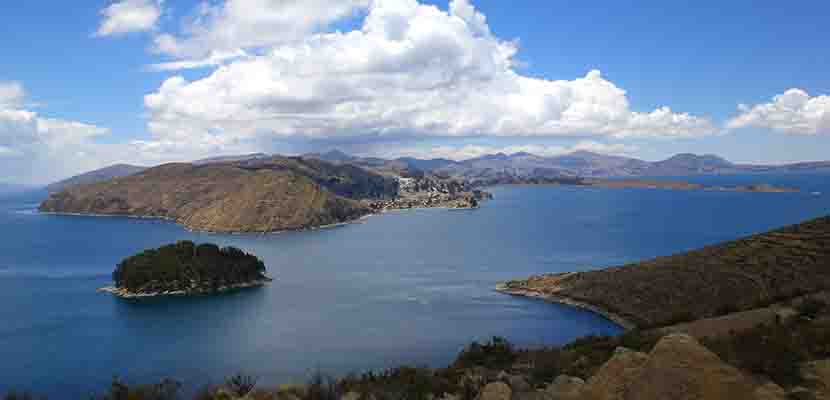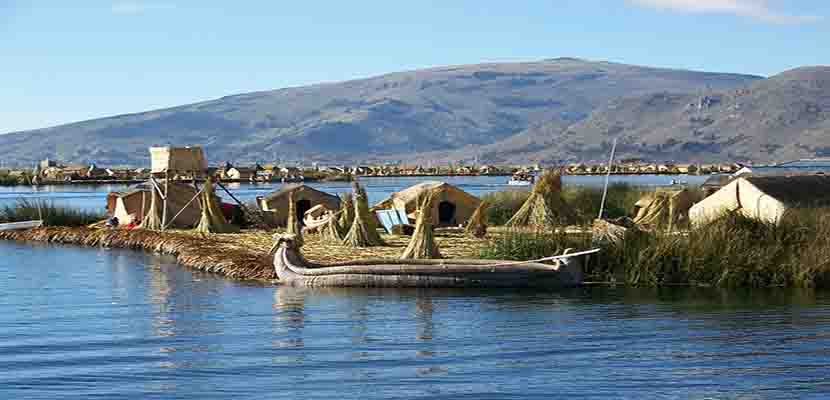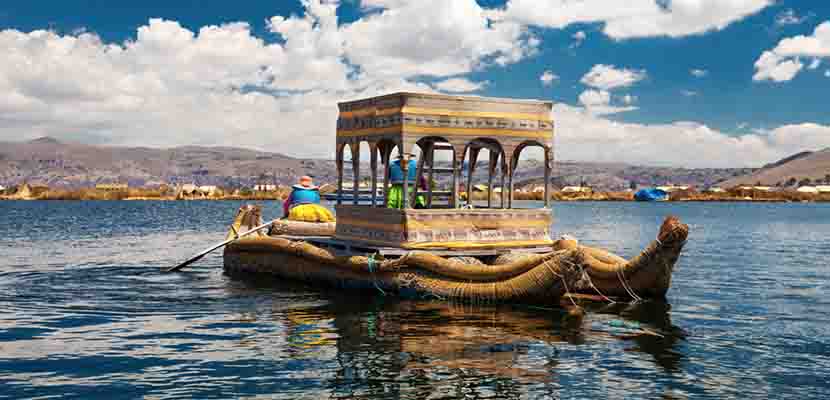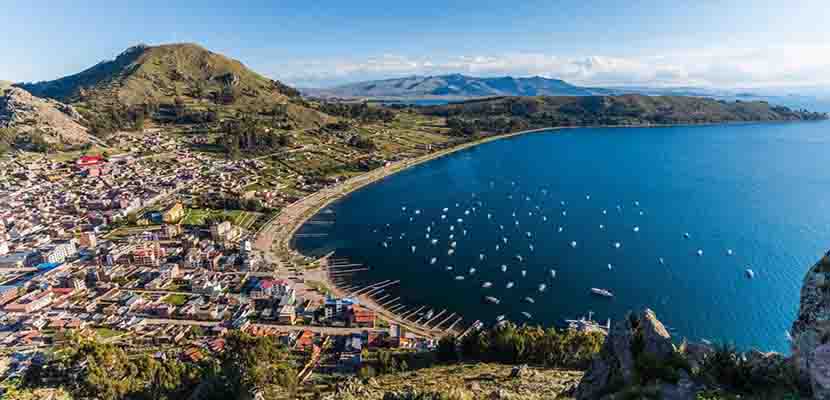
Image | Wikipedia
Lake Titicaca has something that captivates those who contemplate it. It is the highest navigable lake in the world and in ancient times it was considered a sacred place by peoples such as the Chiropa, the Pucará, the Tiahunacota or the Incas. At present it is a tourist attraction located in the Andes mountain range, between the borders of Peru and Bolivia, very interesting for travelers who are enthusiastic about ecotourism and adventure.
In places that can only be seen on foot, there is always a special magic. Contemplating that great mass of turquoise water and soaking up the culture of the Andean peoples is an unforgettable experience. A journey at more than 3.800 meters of altitude that will take your breath away. Literally.
Sacred lake and settlement of civilizations

Image | Pixabay
Titicaca is an important lake in Andean mythology because, according to legend, Mama Ocllo and Manco Capac, sons of the Sun god and founders of the Inca Empire, emerged from its waters.
On the shores of Lake Titicaca, throughout history, various peoples have settled, some of which continue to maintain their customs and culture, such as the Quechua or the Aymara. In the Peruvian part of the lake is located the city of Puno, which was founded by the Spanish in 1666 but where the majority of the indigenous population lives. A town proud of its past that each year shows tourists a pinch of its folklore during the Candlemas Festival through dances and rituals.
Some of the tourist attractions of Puno are its cathedral (XNUMXth century), the balcony of the Count of Lemos (XNUMXth century), the Carlos Dreyer municipal museum (it keeps pre-Inca and Inca pieces and objects).
In addition to Puno, Lake Titicaca has other villages located on the islands that dot it. This is the case of the Uros Floating Islands (where families dedicated to fishing live in small houses made of totora, a material similar to papyrus), Terique Island (where Quechua families dedicated to trade live), Amantani Island (where the temples of Pachamama and Pachatata that are dedicated to the fertility of the Earth are located), the Island of the Sun (legend says that Manco Capac and his wife Mama Ocllo started the Inca dynasty here before founding Cuzco) or the Isla de la Luna (where the Iñac Uyo temple is located).
Likewise, we cannot forget the town of Copacabana, located 150 kilometers from the capital of Bolivia. It is a very interesting place to learn about the culture of the populations of Lake Titicaca, but from a Bolivian perspective. Some of the most important tourist attractions in Copacabana are the Copacabana Sanctuary (1601), the Horca del Inka or the Poncho Museum.
Knowing the Titicaca

Image | Peru Travel
Its dimensions make it the highest navigable lake in the world and practically an inland sea that has two portions joined by the Strait of Tiquina: Lake Maggiore and Lake Menor. It covers an average area of 8.300 km2 whose width is 60 km and its length is 165 km.
Thus, it is a lake with a rich biodiversity framed in a spectacular scenery decorated with snow-capped peaks of the Cordillera Real, which exceeds 6.000 meters in height. In this way, at dawn and dusk, it is easy to understand the spirituality with which Titicaca captivated so many peoples throughout time.
Their descendants continue to venerate these waters with folkloric and religious manifestations that many tourists dare to reach this height to discover Lake Titicaca.
How to get to Lake Titicaca?

Image | Green Route Tours
From Bolivia
Taking a bus from La Paz you can reach Lake Titicaca. The journey takes approximately two hours to the Strait of Tiquina, where you then embark for Isla del Sol.
From Puno
Taking a bus from Lima you can also get to Lake Titicaca in a two-stop tour. One to Arequipa (16 hours) and another to Puno (5 and a half hours). The route is very long so it is almost more advisable to travel by plane since the time is reduced by 1 hour and 40 minutes to Juliaca and in another hour by bus to Lake Titicaca.
Activities on Lake Titicaca
In addition to giving free rein to photography, Lake Tititaca is a great place to practice water sports such as diving, rowing or sailing. You can also go trekking or cycling to admire the incredible Andean landscapes.
Recommendations for traveling to Titicaca
- The climate on Lake Titicaca is cold and semi-dry. It is advisable to wear warm waterproof clothing, dark glasses, sunscreen and lipstick to avoid burns to the face and eyes.
- If during the visit to Lake Titicaca we also want to know the Taquile or Amantí islands, we will have to stay in a house of the inhabitants themselves since there are no hotels there. As a gesture of gratitude, it is recommended to give the family that will host you a gift.
- Some extra batteries for the camera will be a good idea to avoid having to constantly recharge it. Sometimes there are no plugs nearby.
- Lake Titicaca is at an altitude of 3.800 meters, so it is convenient to have a good physical preparation when doing this excursion. A good preparation and some cardiovascular exercises will help us breathe without difficulty.